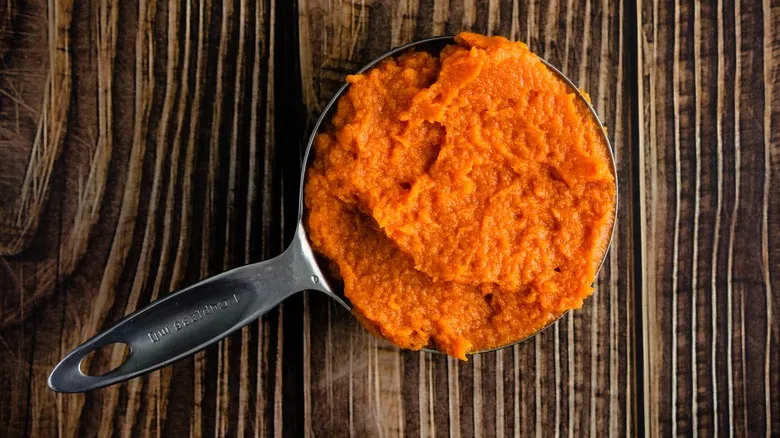Methods of freezing pumpkin puree
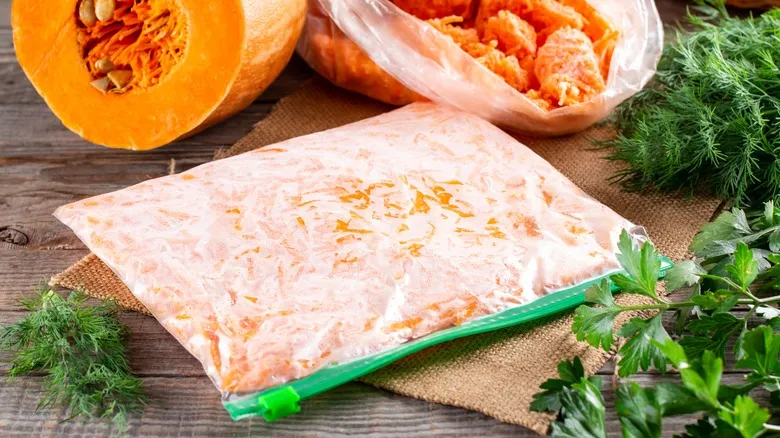
One of the most common mistakes that can spoil your food is storing items in the cans they came in, whether in the refrigerator or freezer. The liquid inside can expand when frozen, potentially causing the can to burst or explode. When it comes to canned pumpkin, it's advisable to transfer the contents to a different container. You can use a muffin tin, ice cube tray, or silicone versions of either. Muffin tins are ideal for recipes that require larger quantities of pumpkin puree, while ice cube trays work well for smaller servings. Simply fill the compartments, smooth the tops, and place them in the freezer. Once frozen, you can move the blocks into a sealed freezer bag if necessary. A silicone tray is particularly useful for this step, as it allows for easy removal of the frozen pieces.
Alternatively, you can skip the trays and place the pumpkin directly into a zip-top bag. However, this may lead to using more plastic than needed, depending on how you portion it out. Scoop the pumpkin into the freezer bag, spreading it evenly to minimize excess air and achieve a flat shape. Then, lay the bags flat on a baking sheet in the freezer. Once they are solid, you can stack them or arrange them side by side to save space.
How to thaw pumpkin puree
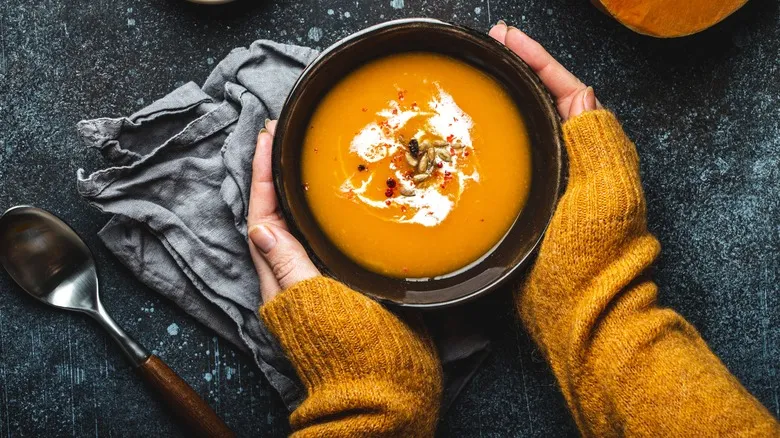
Although frozen pumpkin can be stored for several months, it's recommended to use it within the first three to four months to experience its best quality. Only thaw it when you're ready to use it. The process is as simple as defrosting any other food: just take the frozen bags or trays out of the freezer and place them in the refrigerator. Allow several hours or overnight for it to thaw completely. If you're short on time, you can expedite the process by placing the frozen blocks in the microwave and using the defrost setting. It's normal for some excess water to accumulate during these methods; simply drain it off using a mesh strainer.
Ideally, you should use your pumpkin within three to five days after defrosting. It can be added to a wide variety of recipes, including pasta, bread, cookies, dips, and cheesecake, all of which can benefit from the thick, smooth texture and unique flavor of the mashed fruit. However, if you find that you can't use all of your thawed puree, avoid refreezing it, as this can compromise its quality, affect the outcome of your recipes, and increase the risk of foodborne illness.
Recommended
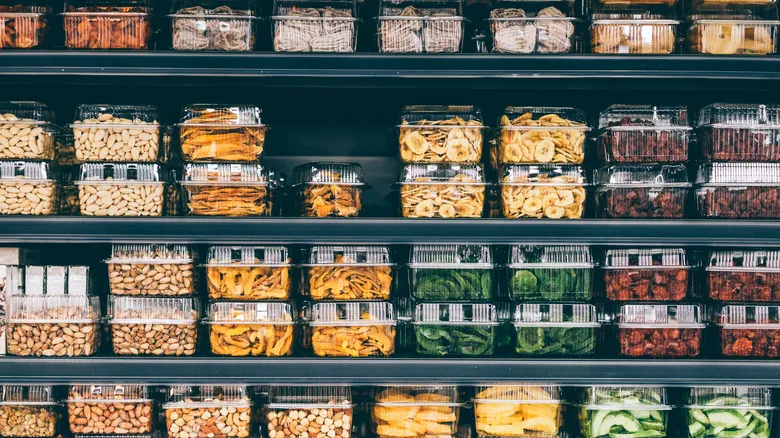
Why You Should Grab Perishable Groceries From The Back Of The Shelf

How Ice Cream Was Served Before Cones Were Invented
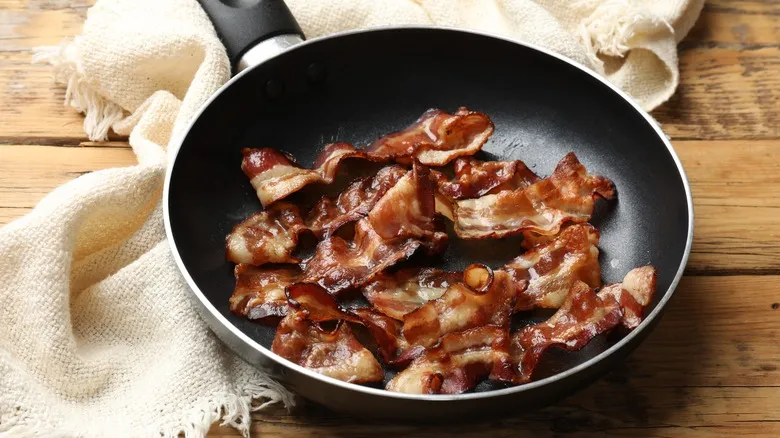
Why Throwing Out Your Bacon Grease Is A Huge Mistake

The Best Way To Store Radishes So That They Last Longer
Next up

